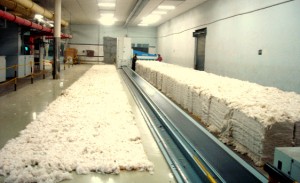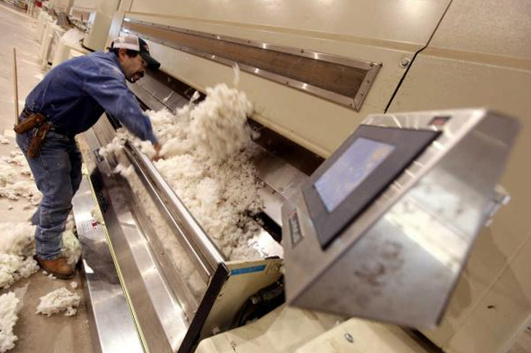Blending may be defined as a condition in which every fiber characteristic is found in the same proportion as in the original blending within every unit cross-section of the yarn. Fiber blending has been practiced since the beginning of the cotton textile industry due to the variation in the physical properties of cotton fibers like scrapple length, fineness, strength & cleanliness.
Blending in Spinning Mill
 Objects of blending
Objects of blending
- To achieve a uniform quality of the product for a longer duration.
- To improve processing performance, increase yarn strength.
- To reduce & control the cost of production.
- To facilitate the cotton for regaining its moisture content lost during baling.
Blending procedure
Stages in Blending operation, Blending is carried our three stages:
- Metering determination & precise establishment of quantities of the individual components.
- Mixing that is bringing together of the metered quantities.
- Intermingling distributing the components evenly in the body of fibers.
Types of blending operation
|
Blending type |
Process stage |
| Bale Mixing | Before the blow room |
| Flock blending | Within the blow room |
| Lap blending | By using scatters |
| Web blending | At the ribbon-lap m/c or the blending |
| Sliver blending | At the D/F, the sliver-lap m/c the comber |
| Fiber blending | At the card or the OE- spinning m/c |
| Roving blending | At the Ring Spinning m/c |
Blending Techniques
To achieve a homogeneous blend the following techniques were adopted.
- Lap Blending
- Card Blending.
- Bin Blending.
- Hand-stock Blending.
- D/F Blending.
- Massive Blending.
Here detailing some common technique of blending
Lap blending
The blending technique is still used successfully to permit the blending of cotton of contrasting fiber properties to produce a variety of end-users. A doubling scutcher is required, this has a conveyor lattice in feed on which from four to six laps could be laid. The lap sheets from these laps passed doubled through a beater position followed by a pair of cages &lap winding devices.
Advantage of Lap blending
Procedure very good transverse blends & also a good longitudinal blend.
- It is a very easy process.
Disadvantages of Lap blending
- Blend proportions are limited.
- Need for control of lap wt.
Card Blending
Blending by doubling with laps at the card is sometimes used in high production cards. The procedure involves the use of a double lap roll attachment whose feed rolls are positively driven by a link chain by the regular lap roll gear.
Advantages of Card Blending
- The most intimate blend is obtained.
- This method is used to randomly mix two laps differing in color.
Disadvantages of Card Blending
- It can’t be obtained from a wide range.
- Controlled metered blending can’t be carried out.
- Only make a previously proceeded blend more intimate.
D/F Blending
With D/F blending the card slivers are doubled at the drawing process in a predetermined fashion. The percentage of blending depends on the number of slivers processed. In processing of cotton, this method is not used for blending purposes, but it is the most popular method for blending the man-made fiber with cotton.
Advantage of D/F Blending
- Suitable for blending two different cotton qualities.
- Provide the best blend in the longitudinal direction.
- The working procedure is not complex.
The disadvantage of D/F Blending
- Require additional blending passage.
- Stripiness maybe produce in the finished product.
- Poor transverse blending in the product.
- Fiber heterogeneity produced.
Written by
Engineer Sheikh Nurja
B.Sc engineer of textile

